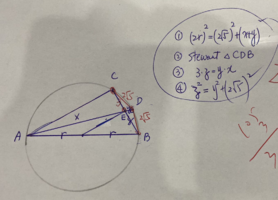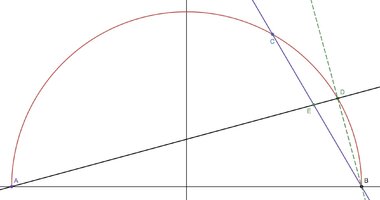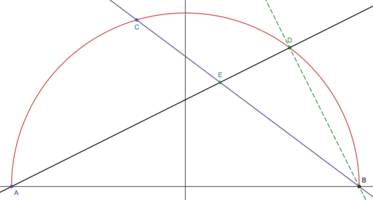Hi folks, I have a geometry problem that I have stuck with for a while.
Can anyone help me?
Thanks a lot
[problem]
Consider a semicircle where AB is the diameter. On this semicircle, there's a point C, and D is located at the midpoint of the smaller arc BC. The lines AD and BC cross at point E. Given that the length of CE is 3 units and the length of BD is 2√5 units, determine the length of the diameter AB.
Can anyone help me?
Thanks a lot
[problem]
Consider a semicircle where AB is the diameter. On this semicircle, there's a point C, and D is located at the midpoint of the smaller arc BC. The lines AD and BC cross at point E. Given that the length of CE is 3 units and the length of BD is 2√5 units, determine the length of the diameter AB.



